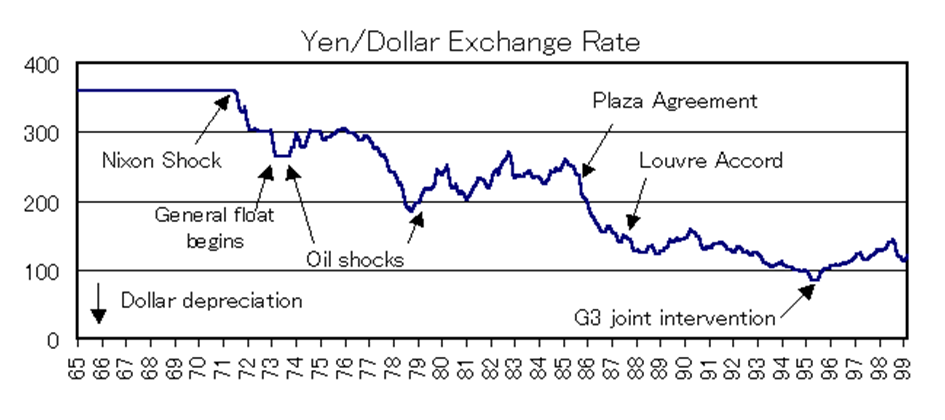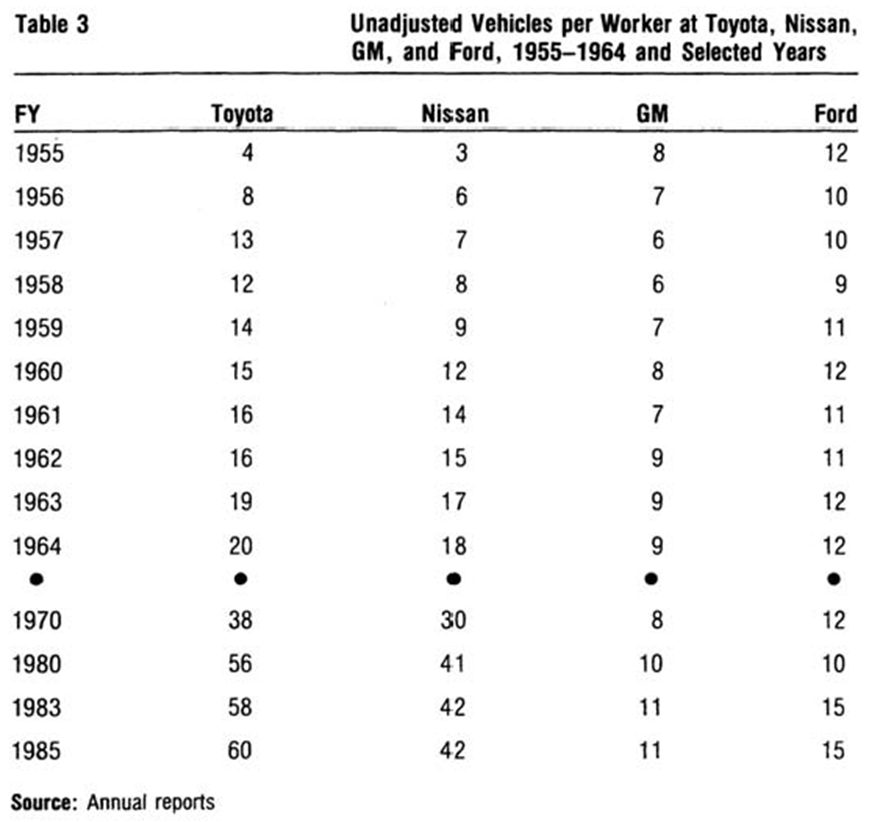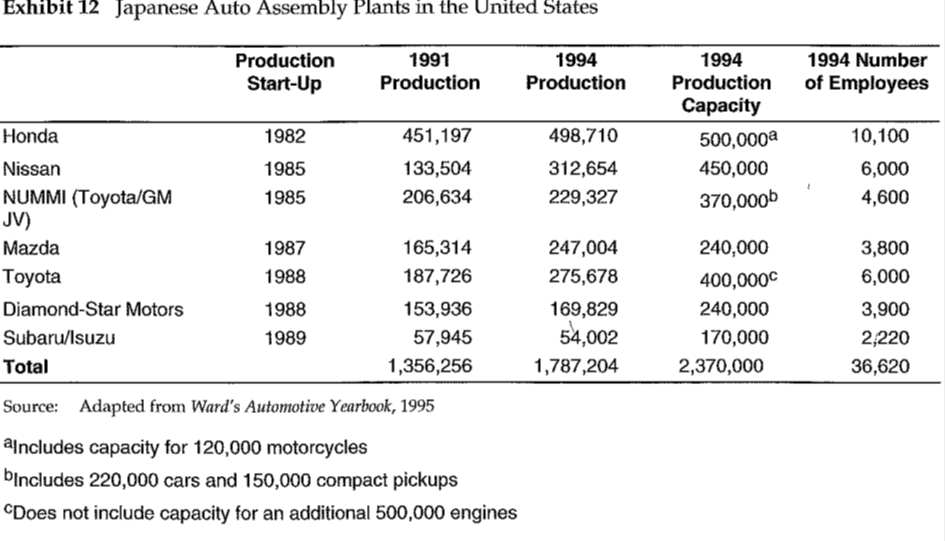What happened?
In 1985, the New York Plaza Hotel held a meeting of finance ministers from the world’s largest economies, viz. West Germany, the UK, the US, and Japan. The main discussion centered on the dollar development in relation to the Yen currency. The dollar currency development during the early 1980s led shortage in the US trade, which later propagated a high influx of foreign capital. In both the Republican and Democrats factions, protectionist theories emerged fueled by the shared desire of addressing the current dollar value rise in relation to the Yen problem.
This discussion was important to the involved factions since it meant an elimination of the Japan-US trade unbalance and lessening the protectionist’s demands. The suggestions made in this discussion would benefit all the involved parties economically. For instance, Japan would increase its exports, which meant increased revenue and improved GDP for the country. Therefore, in the quest to realize the set objectives, the involved parties were required to effect some changes in their stock exchange markets especially from the international front. For instance, the Japanese government traded 3 million dollars for Yen on the Tokyo and New York markets the following day. The acceptance of the outlined policies implied that the involved parties were ready to shift from their conventional way of doing business and adopt the set suggestions. In 1995, the Yen against the U.S dollar reached a post-world War II high, which ushered Japan into the super endaka period (Obstfeld, 2008).
The Japanese auto manufacturers experienced severe impacts due to the endaka. For example, the heightened price of the dollar on the Japanese cars led to a drop in their competitiveness. In addition, with the endaka advent still present, there was a high probability of their elimination in the global markets due to the cost advantage. In addition, back in Japan people did not receive this move kindly, as they were afraid of job loss following the implementation of the set policies. However, due to the imbalance unemployment rate shot up by 3 percent, thus causing many firms to downsize, while others allowed for profit loss rather than complete closure of their factories.

During this time, companies in Japan came up with unreasonably high prices in a bid to push suppliers to sell their goods at low prices. In addition, the manufacturers embarked on different aggressive growth strategies like adopting marketing and advertisement strategies as a way of improving revenue. Faced with the possibility of running into losses, they had to capitalize on selling huge volumes in a bid to break even (Obstfeld, 2008). The first cycle of the crisis helped to enact the relocation of the production facility in the United States. In Japan, the crisis’ second impacts mandated other vehicle manufacturers to re-evaluate their production positioning. Such initiatives pioneered the Japan car manufacturers to venture into markets that promised cheap productions like Asia.
Endaka mainly happened due to the interplay caused by the divergent fundamentals within the economy (Kou, Stein, & Spar, 1996). For example Japan’s rise as a manufacturing and economic superpower, the deficits, and trade surplus that accompanied importers or net exporters, the United States debt-burden and consumption economy, and the leadership policies of the involved countries. In addition, the researchers add that such implementations relate to the currency interventions and conditions of international trade barriers.
In a bid to counter the emerging market changes in the face of implementing the suggested policies, the Japanese government stepped in to help its homegrown companies to weather the rough business environment. The mitigations entailed considering initiatives like offering less emphasis on economic aspects like exports. Such moves were contrary to what happened initially. This plan albeit effective was certainly going to cause radical changes mainly on the companies that relied on exports. An example of its impacts reflects on the aspect that Japans net exports analysis by the year 1985 made it the most trade-dependent nation internationally as shown below

The reaction of the car manufacturers to the existing technical and labor differences within the crisis included their consideration to implement stringent, but carefully planned combination of mitigation instruments. Some of these instruments included initiatives like moving abroad most of their manufacturing facilities, cost cutting, which also led to labor cutbacks, diversification, and raising product prices. These selected implemented strategies saw the car manufacturers gain a substantial net return, which ended up profiting the US car manufacturers, since they reported a slightly higher net percentage return.

Response from the Japanese firms
The Japanese firms had to change some aspects including drafting and managing new sophisticated strategies for the entire automotive industry. In addition, companies would shift production to overseas in a bid to avoid logistical issues of getting the finished product to the consumers. Alternatively, the companies could drive down their productions costs in a bid to have high margins, which would give space for competitive pricing and thus remain afloat in the international markets. Lastly, companies in Japan together with the government would reconsider their stand on international market matters and embrace inclusivity, which would allow the integration of foreign practices, thus gaining competitive advantage.
Lessons
The most outstanding lesson from this case study is the need to be willing to adjust to market demands and policy changes because such aspects are inevitable in the business world. This lesson applies to the entire systems and business content of establishing an international strategy of forming global networks of business bases and overseas production in addition to strengthening their overseas production base in relation to other countries.
Before other car manufacturers can implement the Japanese global business plan and the domestic business plan that often work hand-in-hand, the manufacturers need to grasp the concept fully. Local realignment developed from the crisis leads to a domestic recession while the growth of international reorganization comes from the heightened trade disagreements that originate from the radical increase of car exports.
Other car manufacturers can also benefit from implementing strategies for increasing their overseas manufacturing mainly as a means of boosting their profit and export ratio. It will help give them the best prices since the production will be more profitable as compared to when done locally. One way that the car manufacturers can meet this objective is if they capitalize on the advantages of operational plants ratio mainly in relation to the current stress on lean production as opposed to investing in ventures that present high risks. It is the best solution since issues like recession and market maturity possibilities do not apply (Shachmurowe, 1997). Lastly, it is advisable for companies to carry out extensive market research before embarking on any change because haste decisions can have long-term retrogressive effects.
References
History of International Monetary Systems: Part 3. (n.d). Web.
Kou, J., Stein, E., & Spar, D. (1996). Japan automakers face Endaka. Harvard Business Review. Web.
Obstfeld, M. (2008). The Yen and Japan’s Economy, 1985–2007. Berkeley, CA: University of California Press. Web.
Shachmurowe, Y. (1997). Japan’s enigmatic coexistence of strong currency and trade surplus. Web.